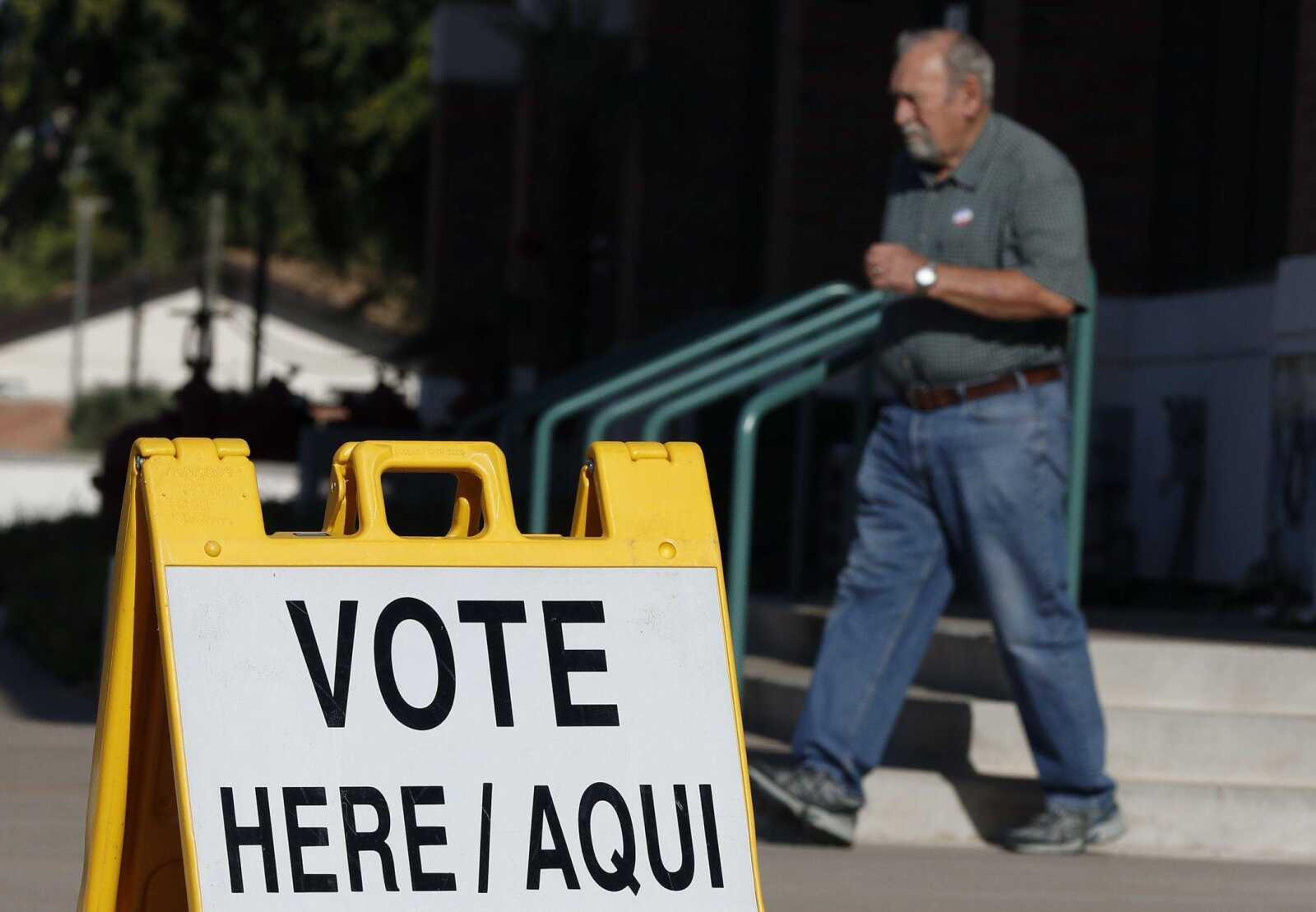Hackers? No, human error plagues Arizona voting
PHOENIX -- For all the worries about Russian hackers and other cyber-vandals, voting problems this week in Arizona served as a reminder one of the biggest threats to fair elections is plain old human error. That appeared to be the case during Tuesday's primary, when dozens of polling places in the state's most populous county opened late because the voter verification machinery had not been set up...
PHOENIX -- For all the worries about Russian hackers and other cyber-vandals, voting problems this week in Arizona served as a reminder one of the biggest threats to fair elections is plain old human error.
That appeared to be the case during Tuesday's primary, when dozens of polling places in the state's most populous county opened late because the voter verification machinery had not been set up.
The Maricopa County recorder, the official in charge of running elections in and around Phoenix, said the contractor hired to connect the tablet-like devices didn't send enough workers to complete the job on time. The contractor insisted it dispatched more people than the county requested.
Either way, 62 of the county's 750 or so polling locations did not open first thing in the morning, though all were up and running before noon. Election officials gave no estimate of how many people were unable to cast ballots because of the foul-up.
The confusion in the state where more than a million voters cast ballots came two years after Phoenix-area residents ended up waiting for hours in the heat to vote because a previous election chief drastically reduced the number of polling places.
"Obviously anytime any voter is unable to vote or leaves the polls because of a long line or a problem, that's a concern. But equipment failures and malfunctions happen," said Liz Howard, a cybersecurity and elections expert at NYU's Brennan Center for Justice.
Howard said issues like the ones in Maricopa County could have been remedied if officials had a backup plan such as a pre-printed voter list.
Over the past two years, much of the national conversation about elections has been focused on cybersecurity and the threat of meddling by Russian hackers.
Since the 2016 presidential election, state and local election authorities have been scrambling to improve their cyber-defenses, upgrade voting systems and train election officials.
Officials say Russian hackers targeted election systems in at least 21 states in the months leading up to the 2016 vote. There has been no indication any vote tallies were changed.
But security is not the only concern. Machine breakdowns, software glitches and other more ordinary problems have disrupted voting.
In California's June primary, nearly 120,000 voters in Los Angeles County were left off printed voter rolls because of a software error. About 12,000 of the affected voters cast provisional ballots and their votes were counted, but it's unknown how many might have walked away because of the hassle and delay.
In South Dakota in June, officials had to use provisional ballots when their equipment couldn't connect to the internet.
In Nevada this June, officials were less-than forthcoming when releasing information about voting machine glitches they said affected only a small number of voters. An investigation by the Reno Gazette Journal found there were more than 300 reported machine malfunctions across the state, including software hiccups, which led to double-voting and resulted in a special election in Clark County.
In Arizona, Maricopa County Recorder Adrian Fontes said Tuesday he learned a day before the election not all of the equipment had been hooked up yet, and he sent out staff members to try to fix the problem.
But he made no mention of the delayed openings during a Facebook Live event Election Day. Nor did he alert the county Board of Supervisors until Tuesday afternoon, when he asked it to keep polls open past the 7 p.m. closing time.
The board turned down the request, saying Fontes had been given enough resources to run a successful election.
The contractor involved, Tempe-based Insight, said it provided more staff than it was required to and only 43 of the locations not opening on time were late because the machinery hadn't been connected.
"Insight shares the frustration that voters felt Tuesday and has been working diligently to help the county resolve technical issues as they arise," spokesman Scott Walters said in a statement. "Insight is committed to working with the county to ensure that disruptions to the voting process do not continue in future elections."
Criticism came down hard on Fontes, a Democrat who unseated his predecessor, a Republican who had held office for nearly three decades before the long lines of the 2016 primary cost her her job.
By Wednesday, Republicans had released a video ad attacking Fontes, who isn't up for re-election until 2020.
"Adrian Fontes promised a lot in 2016. But today, he failed Arizona again," the ad said.
Fontes said in a statement he takes full responsibility and will not let such a mistake happen again.
Phoenix voter Brent Kleinman said he went to his local polling place twice, at 7 a.m. and 10:30 a.m., and was turned away both times. He ended up at a library, casting a provisional ballot, which is given out when a person's eligibility to vote is unknown.
Kleinman was one of hundreds of voters who waited in long lines two years ago. He said he voted for Fontes in 2016 with the hope a new leader would reform the election system.
"You would think after the bad things that happened in that 2016 that the county and state would create processes that would prevent things like this from happening," Kleinman said.
Connect with the Southeast Missourian Newsroom:
For corrections to this story or other insights for the editor, click here. To submit a letter to the editor, click here. To learn about the Southeast Missourian’s AI Policy, click here.









